Abstract
Passive elastic stiffness of muscle acting at the elbow was assessed in 19 normal subjects by measuring displacements produced by a torque motor acting at the joint. Stiffness ranged from 0.40 to 1.8 Nm/radian and was strongly correlated (r = 0.85) with upper arm volume, allowing us to define a "normal" range for stiffness when corrected for arm volume. In addition, the angle of the elbow with the arm fully relaxed and no external torque applied ("neutral" angle) was found to be 107 degrees +/- 10 degrees. Thus, we have quantified resting stiffness or "tone" in the arm and provided normal data for comparison with patients with pathophysiological conditions such as rigidity or spasticity.
Full text
PDF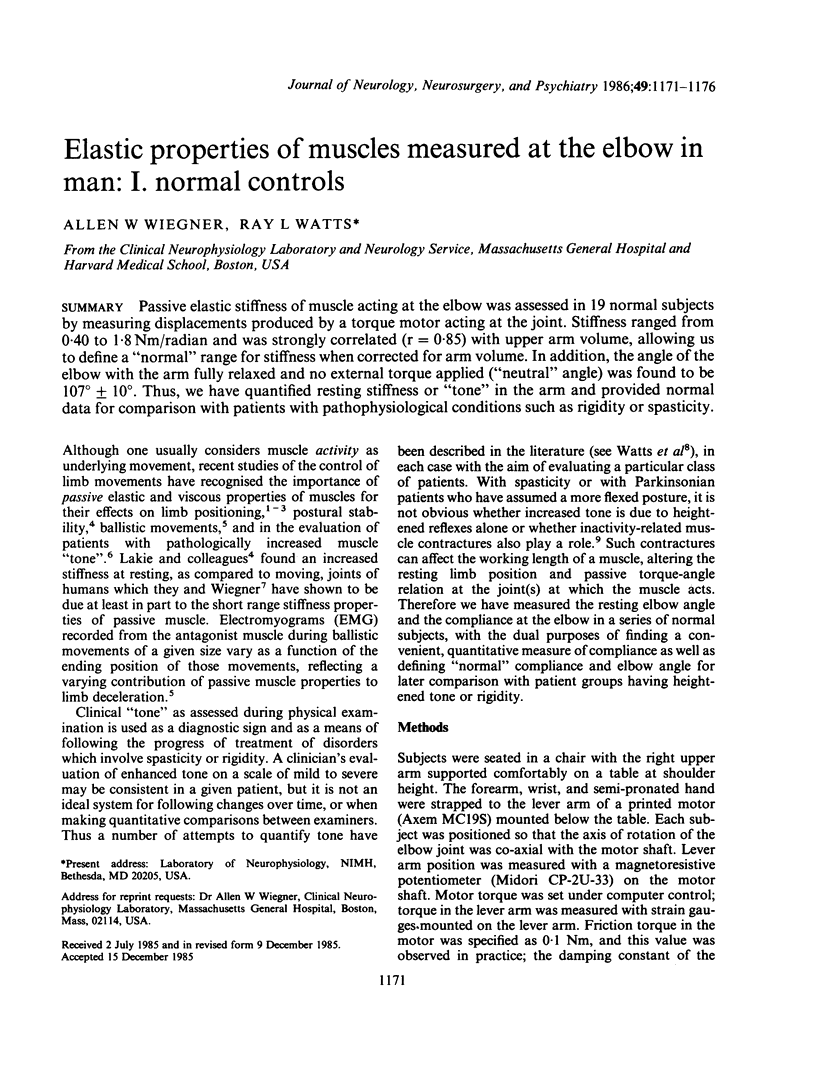
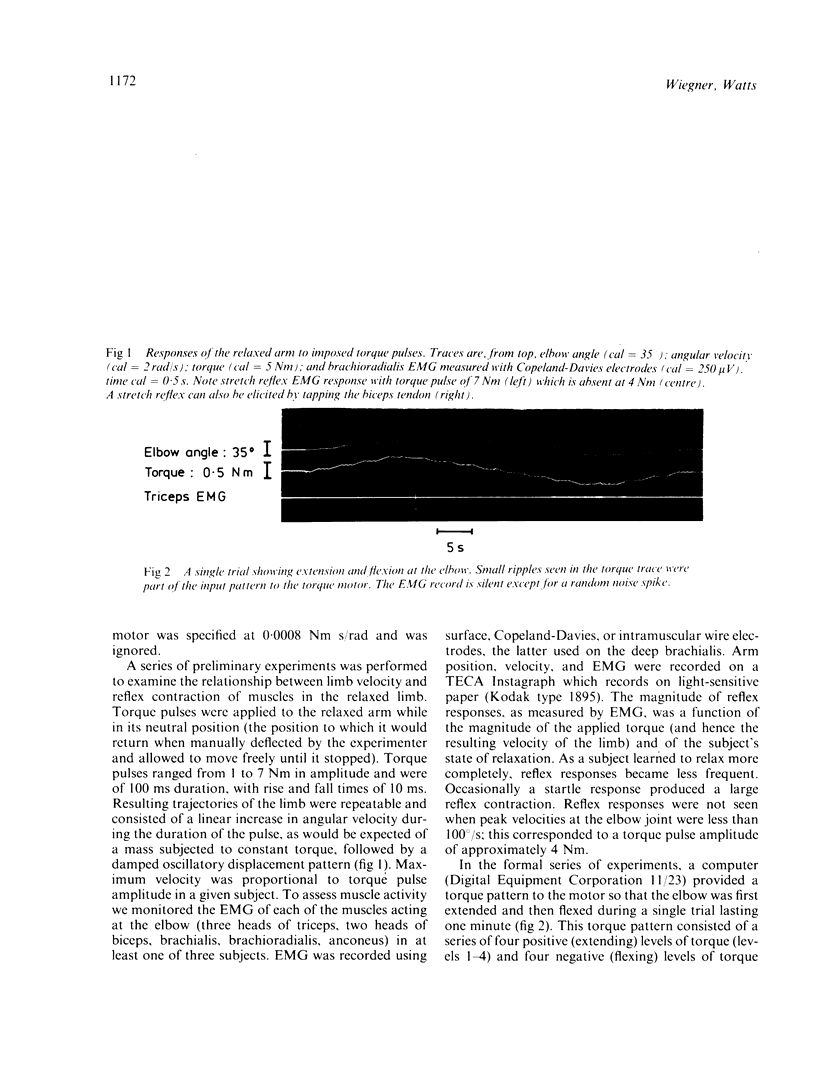
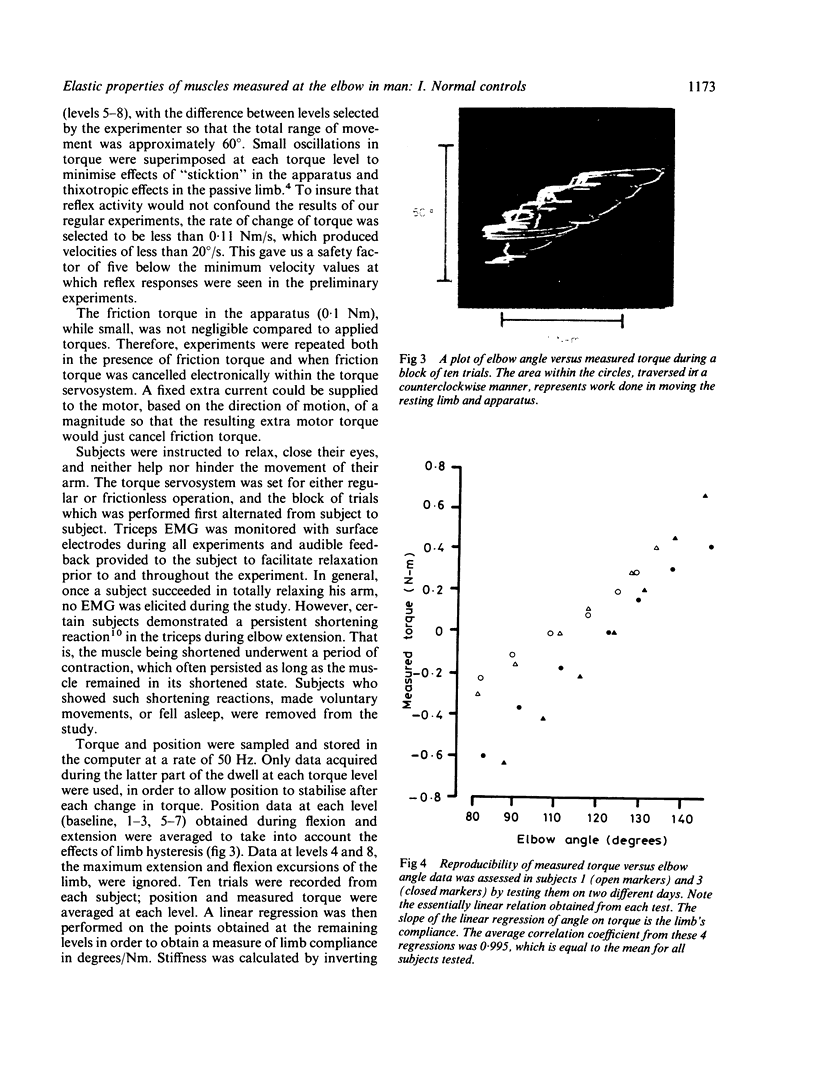
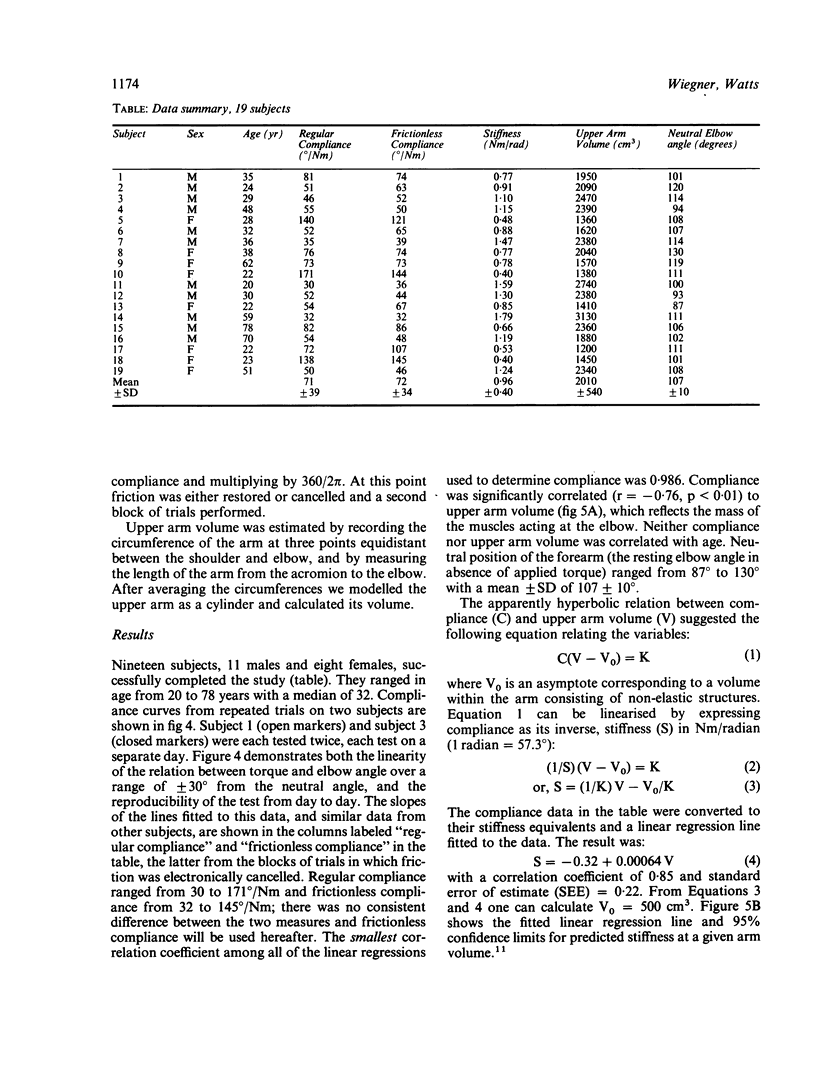
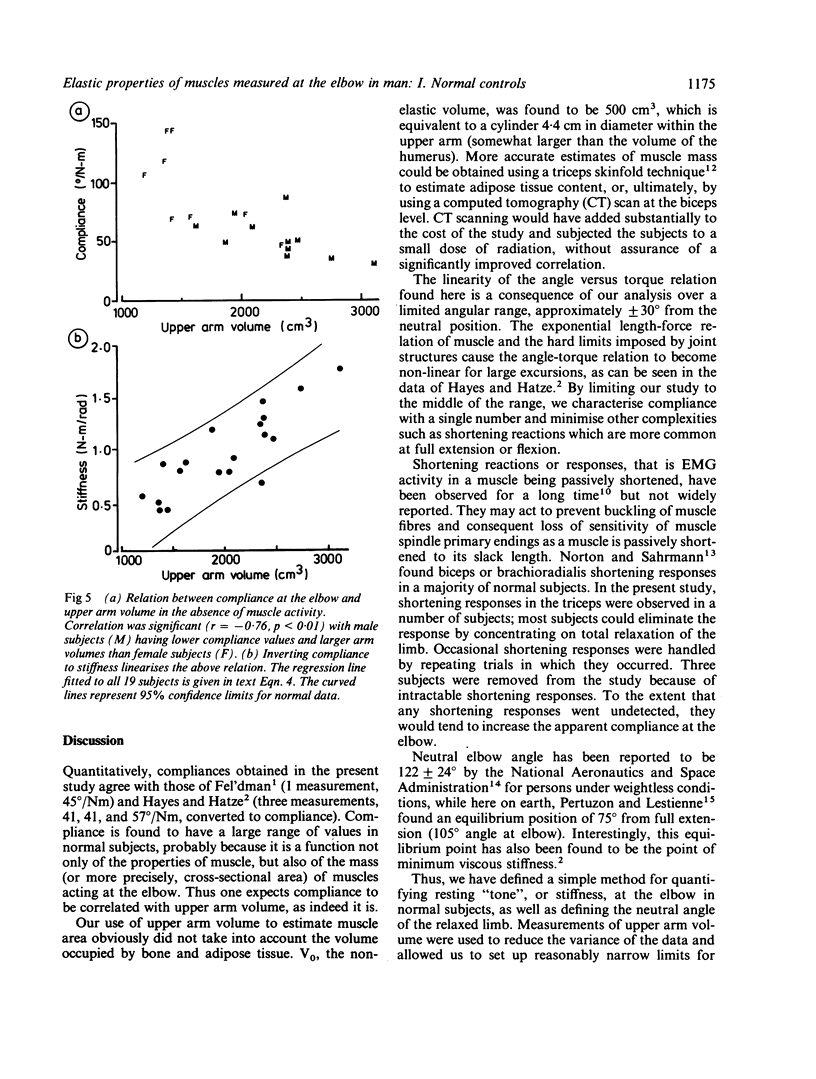

Images in this article
Selected References
These references are in PubMed. This may not be the complete list of references from this article.
- Bizzi E., Accornero N., Chapple W., Hogan N. Arm trajectory formation in monkeys. Exp Brain Res. 1982;46(1):139–143. doi: 10.1007/BF00238107. [DOI] [PubMed] [Google Scholar]
- Dietz V., Quintern J., Berger W. Electrophysiological studies of gait in spasticity and rigidity. Evidence that altered mechanical properties of muscle contribute to hypertonia. Brain. 1981 Sep;104(3):431–449. doi: 10.1093/brain/104.3.431. [DOI] [PubMed] [Google Scholar]
- Gurney J. M., Jelliffe D. B. Arm anthropometry in nutritional assessment: nomogram for rapid calculation of muscle circumference and cross-sectional muscle and fat areas. Am J Clin Nutr. 1973 Sep;26(9):912–915. doi: 10.1093/ajcn/26.9.912. [DOI] [PubMed] [Google Scholar]
- Hayes K. C., Hatze H. Passive visco-elastic properties of the structures spanning the human elbow joint. Eur J Appl Physiol Occup Physiol. 1977 Dec 22;37(4):265–274. doi: 10.1007/BF00430956. [DOI] [PubMed] [Google Scholar]
- Lakie M., Walsh E. G., Wright G. W. Resonance at the wrist demonstrated by the use of a torque motor: an instrumental analysis of muscle tone in man. J Physiol. 1984 Aug;353:265–285. doi: 10.1113/jphysiol.1984.sp015335. [DOI] [PMC free article] [PubMed] [Google Scholar]
- Marsden C. D., Obeso J. A., Rothwell J. C. The function of the antagonist muscle during fast limb movements in man. J Physiol. 1983 Feb;335:1–13. doi: 10.1113/jphysiol.1983.sp014514. [DOI] [PMC free article] [PubMed] [Google Scholar]
- Pertuzon E., Lestienne F. Détermination dynamique de la position d'équilibre d'une articulation. Int Z Angew Physiol. 1973 Jul 20;31(4):315–325. [PubMed] [Google Scholar]




